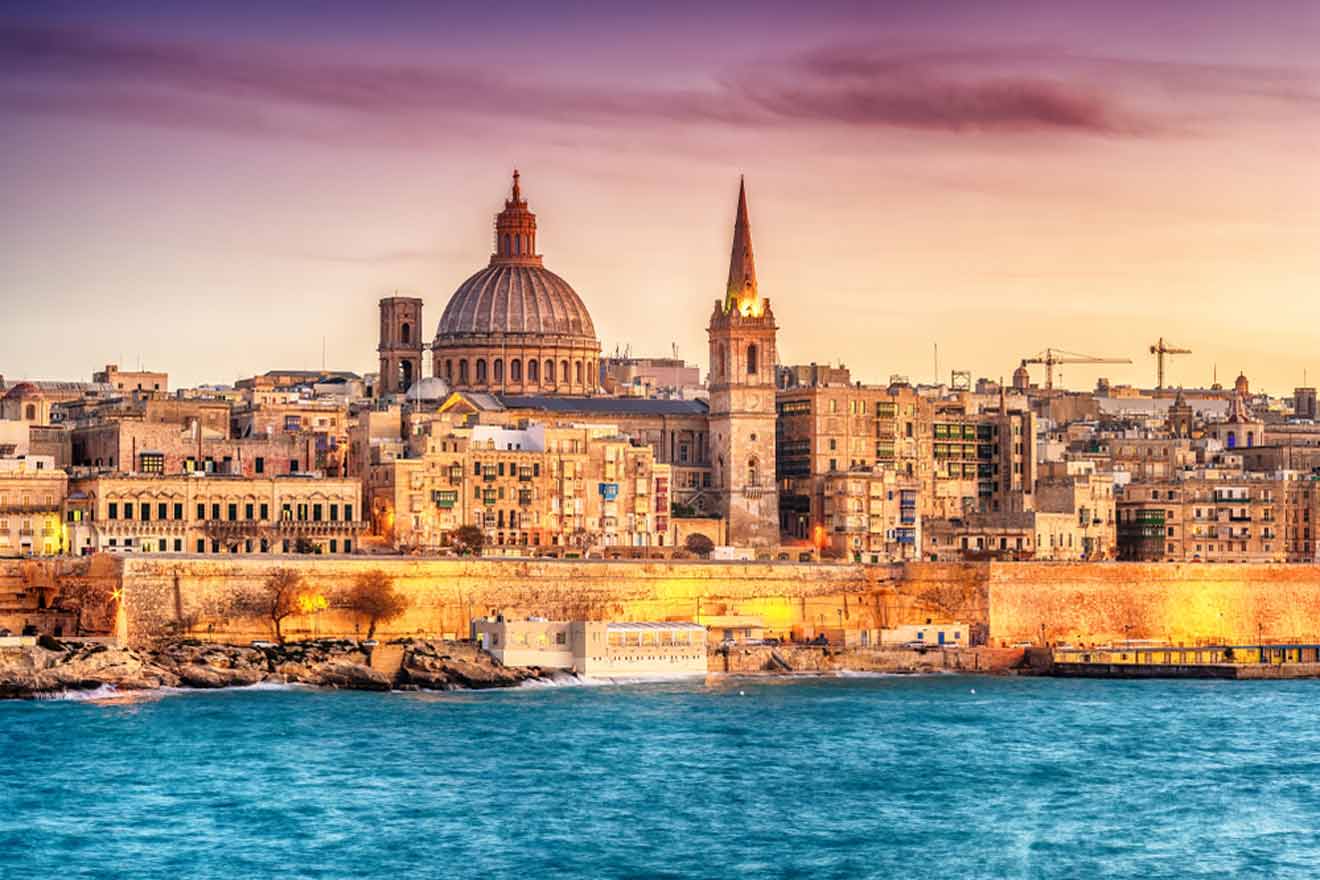
If you’re planning a trip and wondering about things to do in Valletta, you’ve come to the right place.
I’m one such tourist-turned-local living in Malta and know Valletta inside out. In this article, I’ll give you my best recommendations and tips for your itinerary!
Interested in learning more about Malta’s capital city? Check out my in-depth guides on Valletta, the best Valletta hotels, and more!
Contents
- Quick Picks for Your Stay
- Must-know history overview
- 1. Admire the stunning St. John’s Co-Cathedral
- 2. Discover the Grandmaster’s Palace and Palace State Rooms
- 3. Relive La Sacra Infermeria
- 4. Relive history at Fort St. Elmo and the National War Museum
- 5. Experience history coming to life at the In Guardia Parade
- 6. Chill out at the Upper Barrakka Gardens
- 7. Have a blast at the Saluting Battery
- 8. View blueprints at the Fortifications Interpretation Center
- 9. Attend an event at the stunning Manoel Theatre
- 10. See more than books at the National Library
- 11. Wander in awe around Casa Rocca Piccola
- 12. Reflect for a moment at the Church of Our Lady of Victories
- 13. Observe local artists at St. James Cavalier
- 14. Go back in time at the (once) top-secret Lascaris War Rooms
- 15. Take in panoramic views at St. Elmo Breakwater Bridge
- 16. Head Underground
- Where to stay in Valletta, Malta
- Practical information
- FAQs about things to do in Valletta
- Conclusion
Quick Picks for Your Stay
If you don’t have time to read through the whole post, worry not. Here are the main tours to book in advance:
- Get your tickets for St. John’s Co-Cathedral
- Join an AR tour of La Sacra Infermeria
- Take a tour around Casa Rocca Piccola
And here are the best hotels: The Phoenicia Malta (luxury), The Cumberland Hotel (mid-range), Antoniel Suites (budget)
Must-know history overview
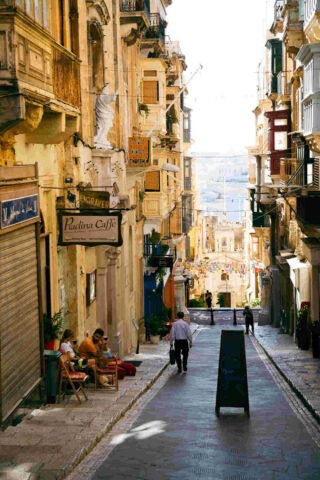
Valletta is the capital of Malta, a city with a proud history and culture. And the origins of the city are quite astonishing. Founded in 1566 by the Knights of the Order of St. John, a military order that ruled over the Maltese islands between 1530 and 1798, the island has preserved a unique architecture that few European cities possess.
Quite impressively, many of the original buildings dating back to that period still exist, making Malta’s capital one big open-air museum. In fact, the city of Valletta as a whole is a UNESCO World Heritage Site. This makes Valletta and Malta hugely popular tourist destinations.
1. Admire the stunning St. John’s Co-Cathedral
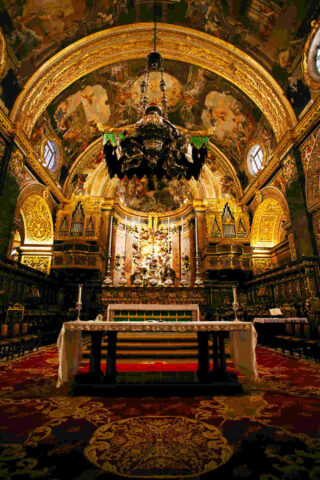
If you doubt how important religion and worship were to the Order of the Knights of St. John, a visit to the St. John’s Co-Cathedral is the ultimate proof. Undoubtedly, the Cathedral is the most-visited point of interest in Malta and should be at the top of your to-visit and of the things to do in Valletta lists.
The Cathedral is an impressive 65-meter-tall structure (213 ft), but its exterior isn’t the most impressive feature. The Cathedral houses breathtakingly rich interior décor and wall paintings dating back to the Roman and High Baroque periods. Stepping inside for the first time is truly awe-inspiring, exceeding most people’s expectations.
The St. John’s Co-Cathedral functioned as the main church for the Knights for more than 2 centuries. It was the holiest of places in all of Valletta and perhaps even the entirety of the Maltese islands. Missing out on seeing the Cathedral is not something an eager traveler would want.
PRICE: €17 per person
Subscribe here to get up to 35% off your accommodation for your next trip!
2. Discover the Grandmaster’s Palace and Palace State Rooms
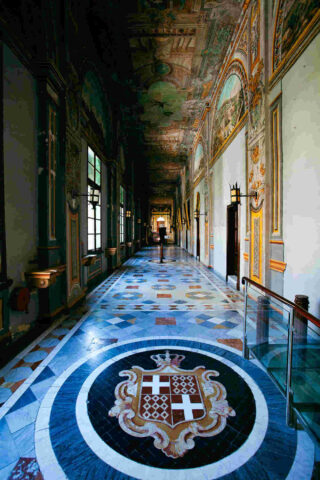
Visiting The Grandmaster’s Palace, or simply The Palace, is yet another thing to do in Valletta. The Grandmaster’s Palace was one of the first buildings the Knights of St. John constructed on the island, dating back to the 16th century. Back then, it was the seat of power for the Order of the Knights of St. John.
When the British came and turned Malta into a colony in 1814, The Grandmaster’s Palace became known simply as ‘The Governor’s Palace.’ Between 1921 and 2015, it housed the Parliament of Malta and was the de facto seat of power.
Nowadays, it serves as the Office of the President. While currently undergoing renovations, part of the building, most notably the Palace Armory and the Palace State Rooms, are open to the public and visitors.
And it’s these 2 features that travelers love seeing the most. The Palace Armoury houses one of the largest assortment of Medieval weapons and armor in the world. Visitors love witnessing the collection of arms and armor, making the Palace a must-visit building in Valletta.
NOTE: at the time of writing, the State Rooms were undergoing extensive renovations, and parts of the building may be closed to the public at times. Call +356 22 954 300 (Heritage Malta, the caretaker organization) before visiting to get the current status.
3. Relive La Sacra Infermeria
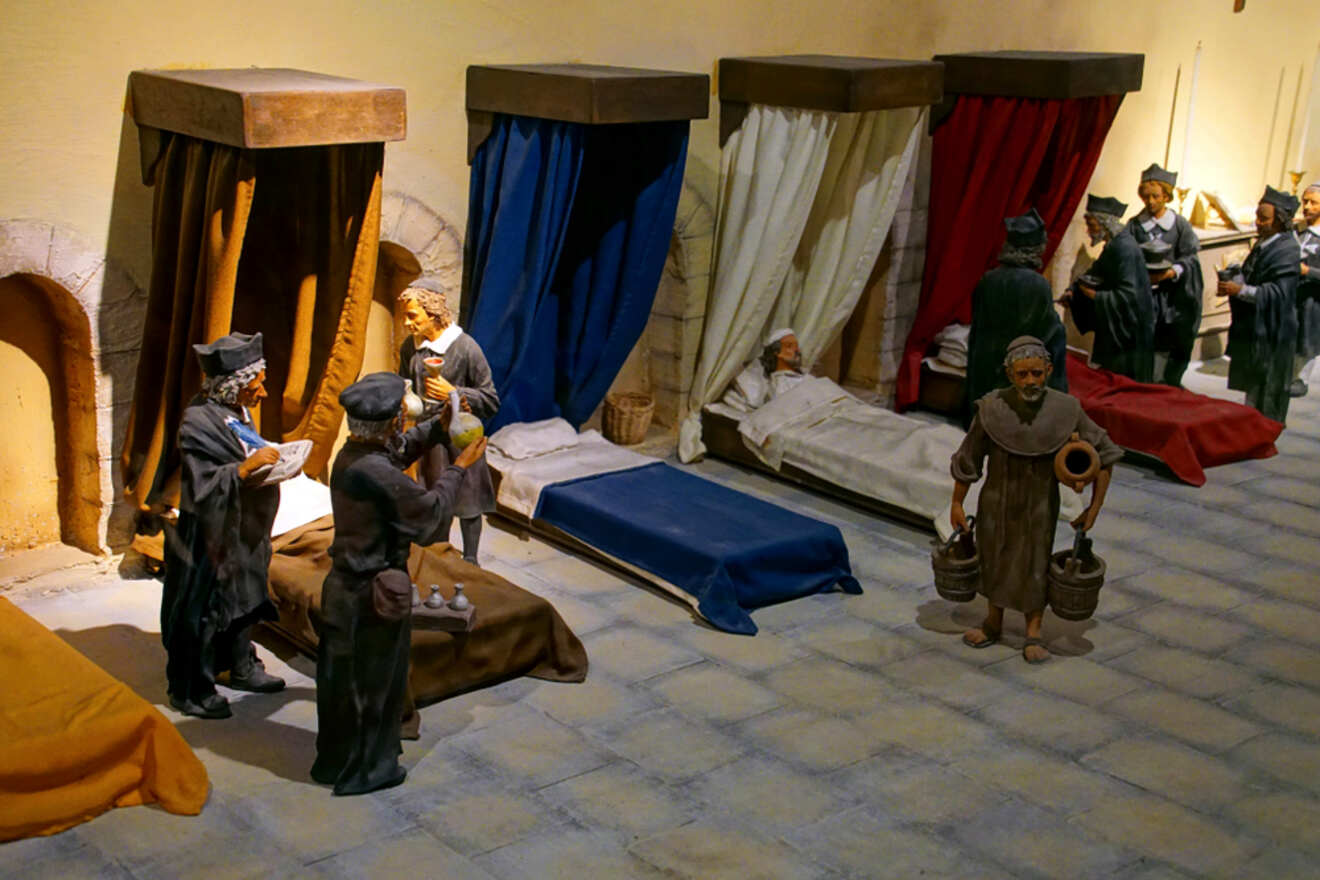
The Order of St. John (also known as Knights Hospitaller) still exists today, and its mission remains the compassionate care for the sick and impoverished. In fact, even though we refer to them as Knights, their main focus was more caretaking than fighting, and the Order never partook in any crusade.
During their time in Malta, The Knights were known for using advanced medical practices, which were far more effective for their time. As a matter of fact, they were so good at medicine that they were considered pioneers in the field, and many European medical students came to study their practices.
Their proficiencies in the field of medicine are best exemplified by the La Sacra Infermeria, a remarkable 155-meter (c. 510 ft) medical ward that served as their main hospital and medical center.
Nowadays, the building is a proud landmark on the waterfront, frequently hosting summits, events, and conferences. Its unique location at the edge of Valletta’s fortifications provides an excellent sight for visitors.
If you’re interested in visiting La Sacra Infermeria, there are 2 options available:
- You can get a ticket to The Malta Experience (a short movie documentary on Malta’s history in a small theater), which offers a tour of La Sacra Infermeria afterward, or
- You can explore the ‘Reliving the Sacra Infermeria Experience,’ which is an augmented reality tour that works with a mobile app. Historical, reenacted scenes are overlaid on the real-life setting of the building. I highly recommend this option, especially if you’re traveling with kids in tow. Informative, engaging, and fun.
HACK: to get a sneak peek of the tour, just grab the app and give the preview feature a try. Search for “MCC Augmented Reality” on your preferred app store.
TIP: if you’re pressed for time, you can try buying a ticket for just the La Sacra Infermeria tour at The Malta Experience ticket office.
PRICE: from €8 per person
Get your augmented reality tour
4. Relive history at Fort St. Elmo and the National War Museum
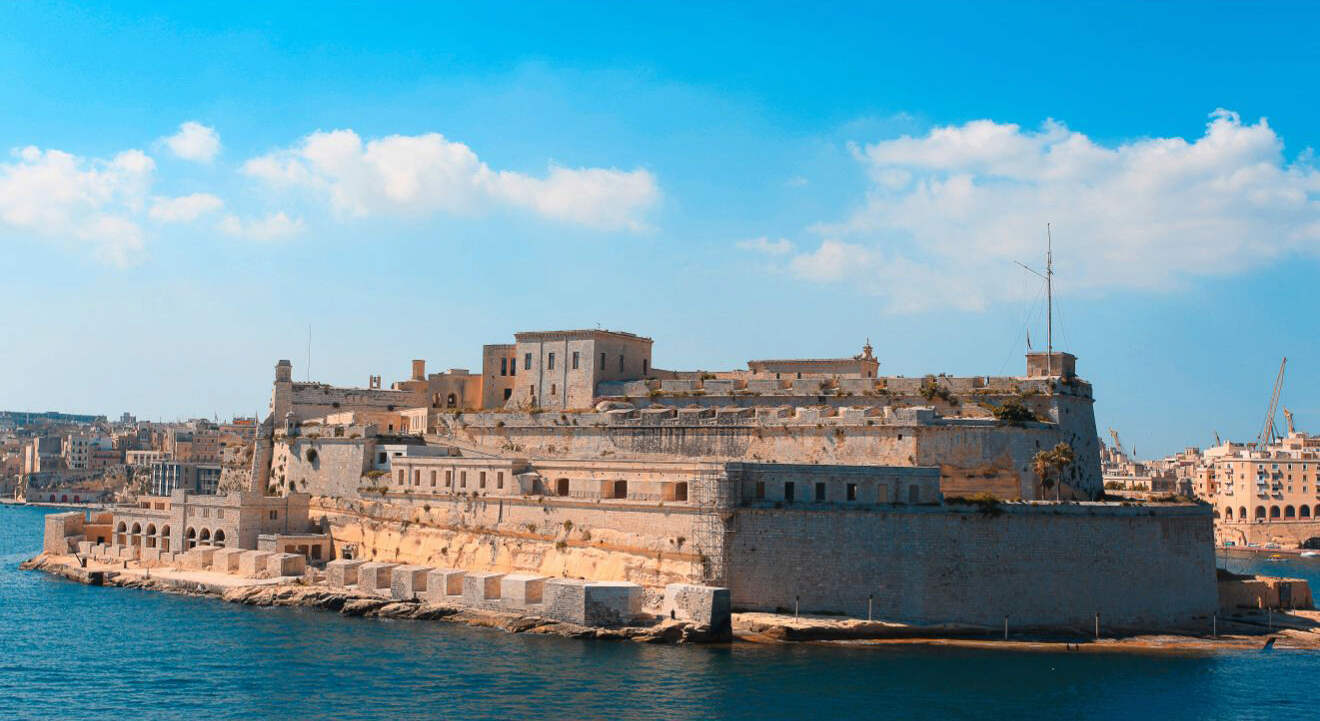
Located at the tip of the peninsula where Valletta was founded, you’ll find Fort St. Elmo. Fort St. Elmo is a remarkable structure designed to act as the city’s main defense point.
The fort played a key role in the Great Siege of 1565, where the Knights successfully defended against the Ottoman Empire’s invasion. It stood strong until reinforcements arrived in the nick of time to save the day.
Sadly, the siege took its toll on the fort, and construction was done to replace the destroyed parts. Although it suffered neglect throughout the years, it has recently been restored remarkably.
Adjacent to the fort, you’ll find the National War Museum. The museum offers a fascinating look into the rich history of Malta, showcasing the countless conflicts and battles that have shaped the island over the centuries of foreign rule.
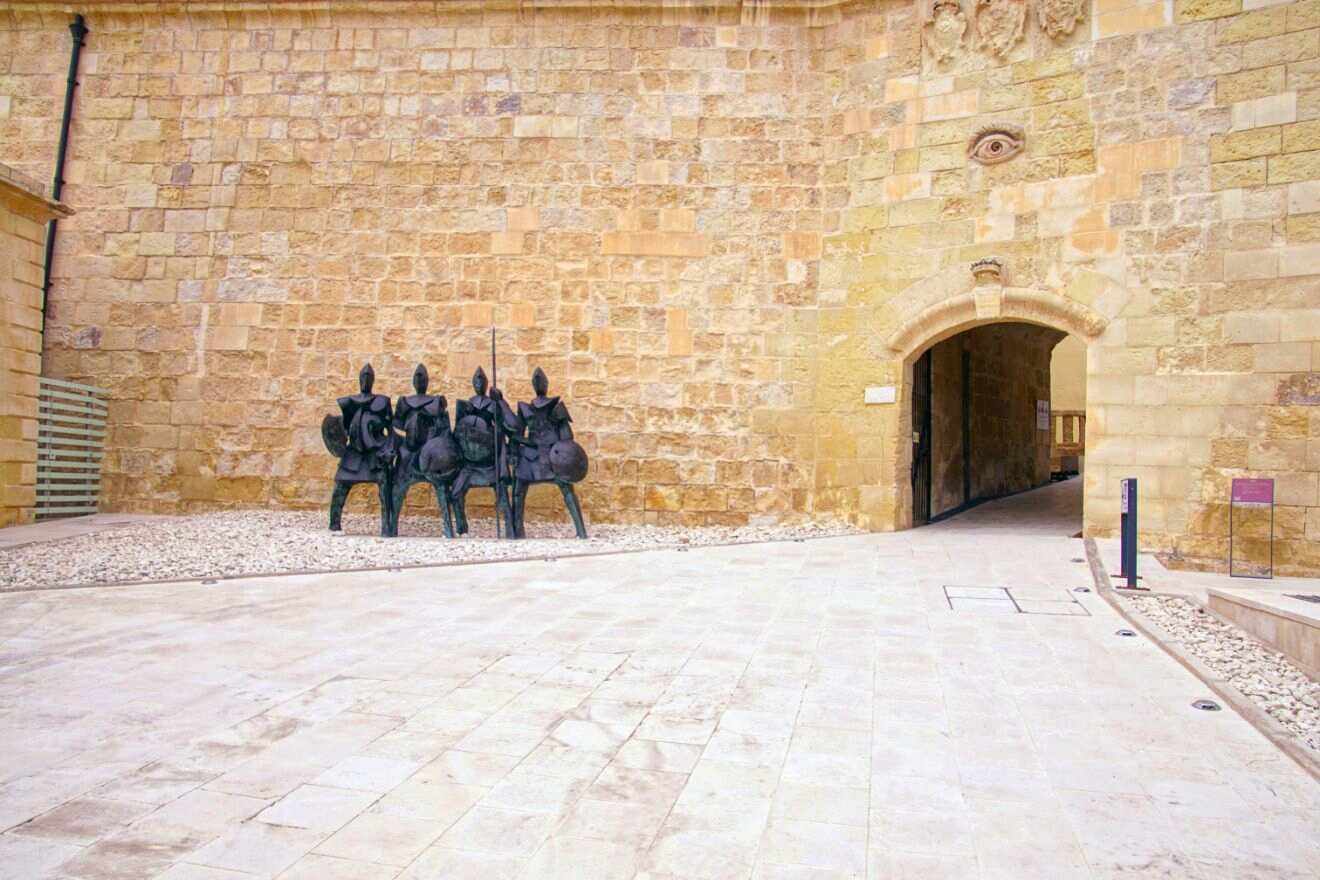
If you’re not really into history, don’t worry! There’s still plenty in Valletta that’ll catch your interest. It’s actually one of the coolest things to check out in the city.
The George Cross (displayed on the flag of Malta ) is on display in this museum. King George V of Great Britain awarded it to the people of Malta in 1942 as a symbol of their remarkable heroism and unwavering dedication. It is a testament to their courage and commitment, and it’s worth checking out when you visit.
The tickets for Fort Sl. Elmo and the National War Museum start at €5.50 depending on what you wish to see. However, if you’re already planning to see more of Valletta’s museums, and other historical and cultural attractions, I highly recommend buying the multi pass in advance, and embark on your trip hassle-free.
PRICE: from €18 per person
5. Experience history coming to life at the In Guardia Parade
Much of Malta’s historical and cultural attractions are closely tied to the island’s proud history. One such attraction is the In Guardia Parade.
The In Guardia Parade is a lively reenactment event showcasing historical events from the era of the Knights in their original setting. These reenactments are organized on most Sundays throughout the year at 11 a.m. in the center square of Fort St. Elmo. You can purchase tickets for these events through the box office.
And these events aren’t even that expensive. For a modest price, you get an engaging and action-packed demonstration lasting approximately 45 minutes. With around 50 reenactors dressed in genuine uniforms and armor from that era, you’ll witness military drills and sparring fights that showcase their combat preparedness.
TIP: make sure to bring a camera with you to snap some unique pictures of the action or film the whole thing.
PRICE: varies by event
6. Chill out at the Upper Barrakka Gardens
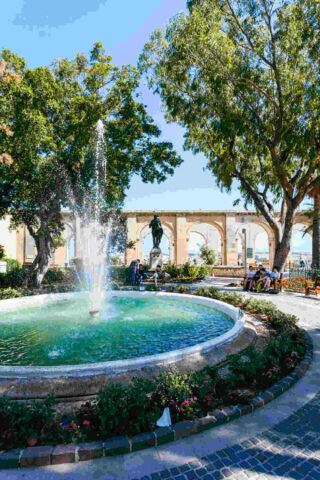
An absolute must-visit in Valletta is The Upper Barrakka Gardens. Located on the edge of Valletta, the Upper Barrakka Gardens offer a peaceful and serene escape from the city. The gardens overlook the city, allowing travelers and visitors to enjoy a breathtaking view of the surrounding area. More specifically, the Grand Harbour and Saluting Battery.
With a small kiosk with tables shaded by trees, this place is perfect for grabbing a bite to eat and sipping some coffee to take a break and relax weary legs.
The Upper Barrakka Lift provides convenient access to and from the harbor quay below. It serves as one of Valletta’s main entry and exit points, especially for cruise passengers who are disembarking for the day near the Valletta Waterfront. You can easily hop on and off the lift to explore the city.
TIP: sample the traditional Maltese pastry called pastizzi here. Filled with either ricotta cheese or mashed peas, it’s a popular (although slightly oily) local pastry. The kiosk sells locally-baked pastizzi but goes in the morning to get them fresh.
PRICE: free
7. Have a blast at the Saluting Battery
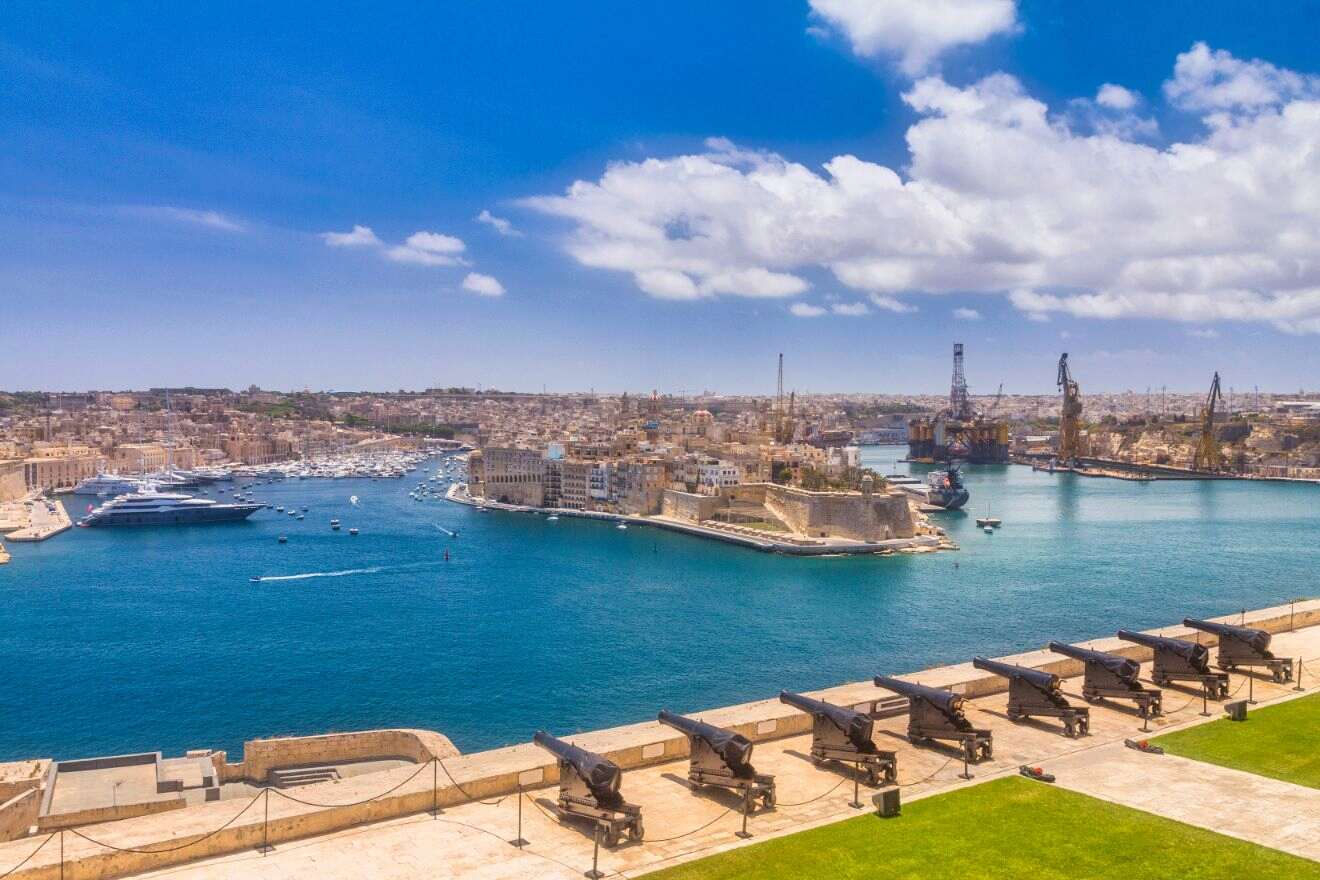
The Saluting Battery sits atop the Upper Barrakka and acted as a defense artillery platform for the Knights during sieges and attacks on the Grand Harbor. Nowadays, it is a popular tourist destination.
Every day at exactly noon and 4 PM, you can experience an exciting and visually captivating moment as one of the restored guns is fired. The guns were also used to welcome guests and friendly vessels entering the harbor.
Visiting the Saluting Battery or at least getting the chance to witness this event is a remarkable experience. When planning your visit and things to do in Valletta, make sure to have the Saluting Battery on your itinerary.
You have a couple of options for experiencing the action. You can stand below the arches of the Upper Barrakka and watch it unfold, or if you’re willing to spend a few euros, you can access the battery and its amenities.
There is also a guided tour, complete with a multilingual audio guide which starts from €17 per adult, and €7 per kid. You can buy your tickets, and book a tour on the official website.
It’s a great photo op to take and enjoy the beautiful scenery overlooking the harbor.
PRICE: from €3 per person
8. View blueprints at the Fortifications Interpretation Center
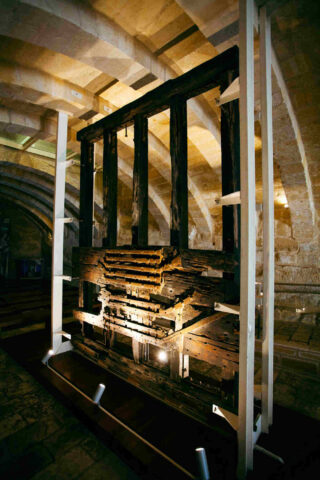
Yet another museum to visit is the Fortifications Interpretation Center. This building houses the blueprints and ideas that helped build Valletta. It showcases all the bastions, forts, and fortifications surrounding the city and the harbor area. These blueprints showcase the Knights’ brilliant taste for design and functionality.
Located inside the museum is The Fortress Builders exhibition, which is both a museum and an information center, where you can find a wealth of information through several mediums.
It’s designed to make exploring and learning easy for visitors, with the added convenience of multilingual options.
PRICE: €2 per person
9. Attend an event at the stunning Manoel Theatre
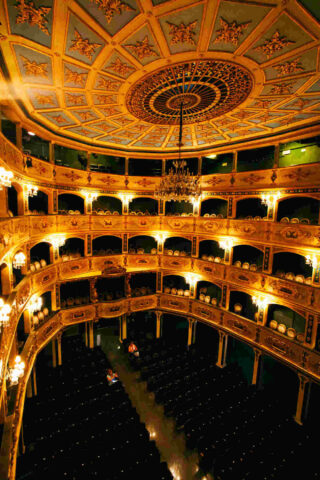
The Manoel Theatre is a stunning structure located in the center of Valletta, brimming with a fascinating and diverse past.
While it’s a delightful experience to witness the revival of what is believed to be the 3rd oldest operating theater in Europe, constructed in 1731, events at this venue are not organized frequently.
If you’re looking for a great experience, you should definitely consider taking a 30-minute audio-guided tour of the building and museum, for a very reasonable €5 fee. Trust me, the theater’s interior is truly spectacular. It’s incredible how this place has managed to survive for centuries and during a highly destructive period of aerial bombings during World War II.
TIP: if you’re visiting Valletta during the colder months of the year, consider attending an event. See the calendar here.
TOUR PRICE: €5 per person
10. See more than books at the National Library
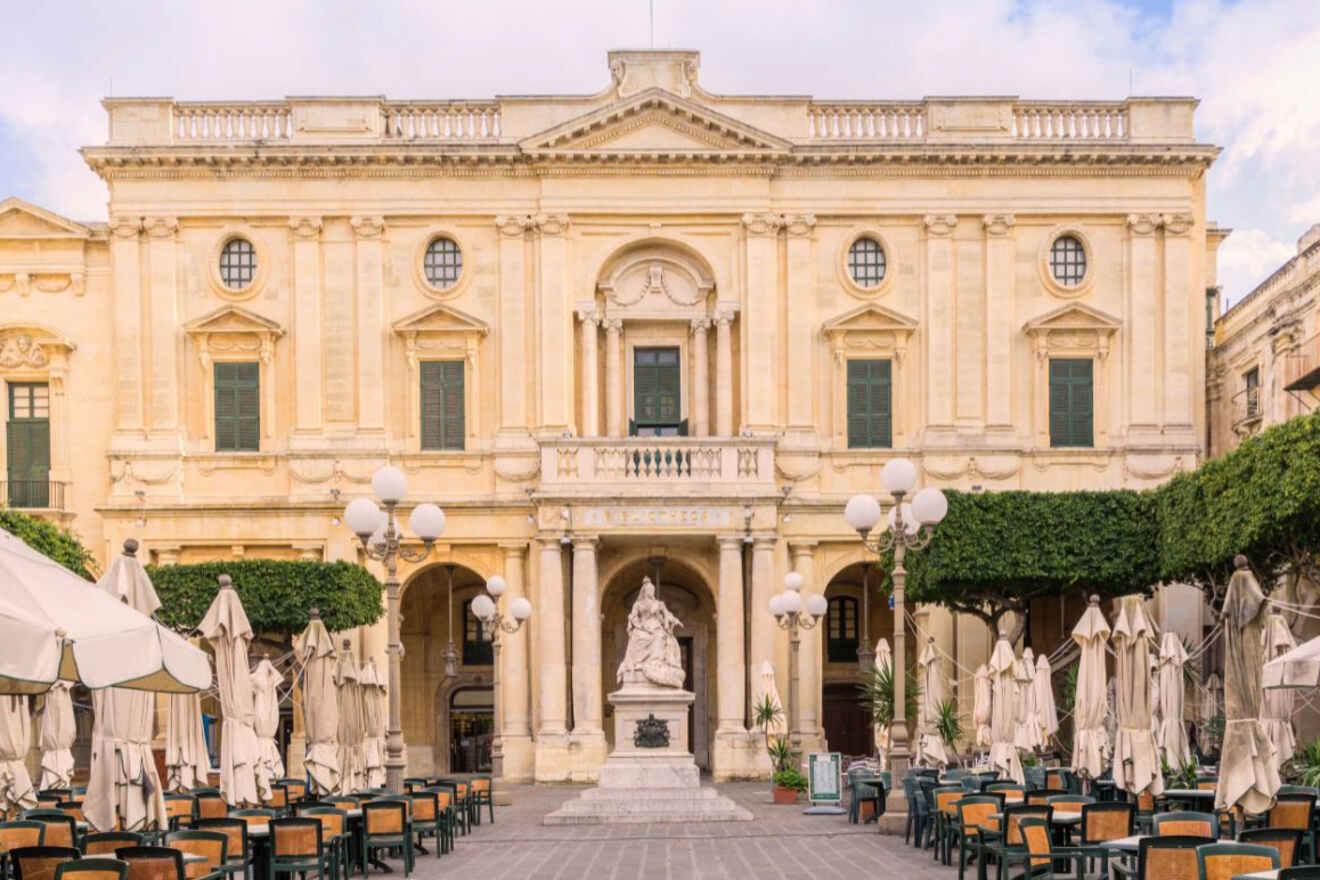
Over the centuries, the Order had amassed a huge collection of books, primarily through donations. You can find these books in the National Library. The National Library was one of the final original buildings constructed in Valletta by the Knights, back in 1776.
The building itself dates to a period of neoclassical architecture. The library’s towering shelves filled with books offer a glimmer into the city’s history. Lastly, don’t forget to check out the fascinating collection of authentic historical documents on display.
TIP: from time to time, interesting exhibits with deep insight into the history of Valletta are set up at the library. Ask at the entrance for more details.
PRICE: free
11. Wander in awe around Casa Rocca Piccola
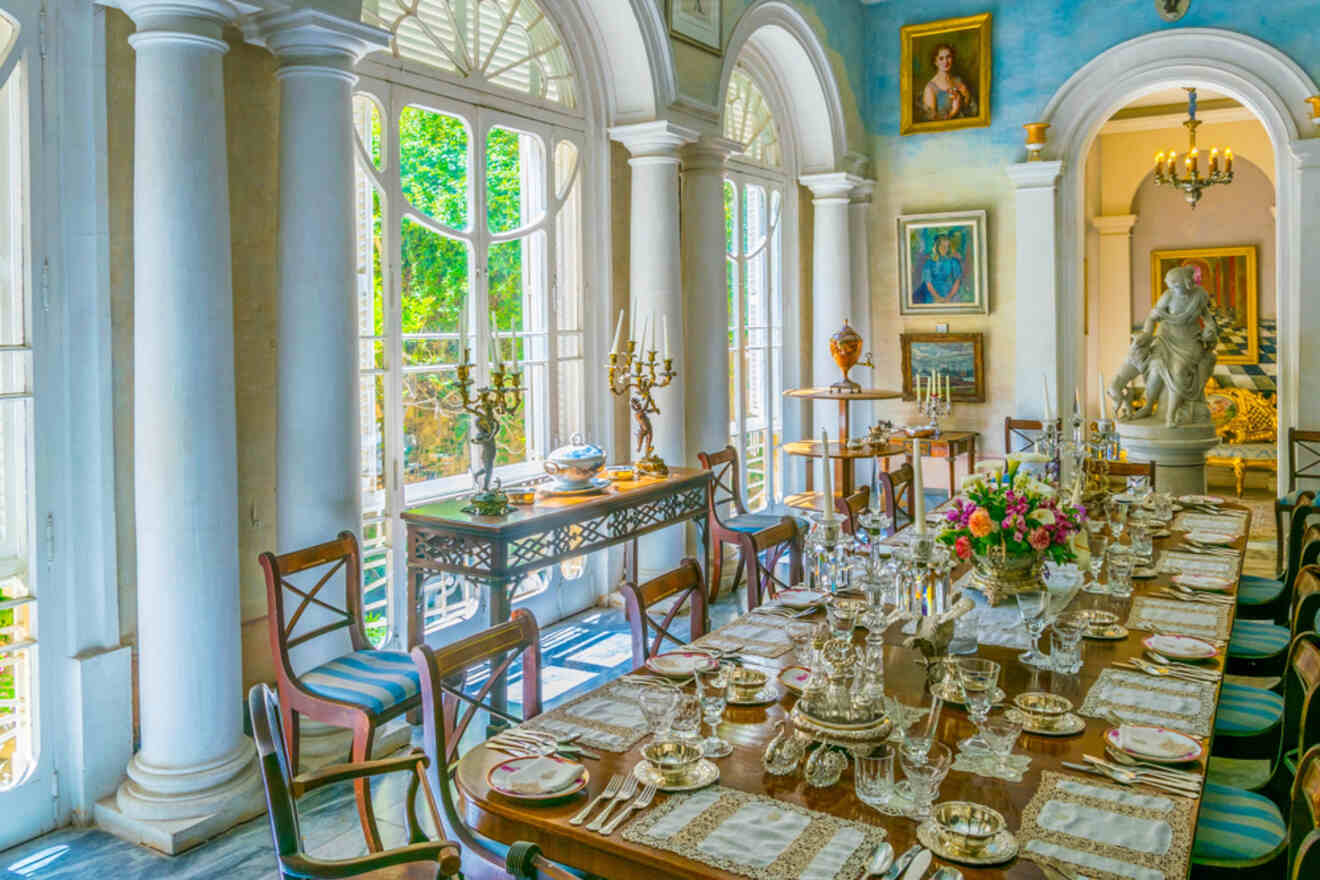
Casa Rocca Piccola is the ancestral residence of the De Piro family. The palace provides a fascinating insight into the lifestyle of the aristocracy in Malta. The house’s interior contains antique furniture, numerous exquisite artifacts, and beautifully adorned rooms.
Surprisingly, the house is currently home to the 9th Marquis de Piro, who graciously opened a section of the residence to the public, transforming it into a captivating museum experience.
Once you arrive at the home, a highly skilled and affable tour guide will accompany you. The tour kicks off promptly from the courtyard, which also provides entry to the home’s underground shelter from World War II, located 30 meters (100 ft) underground.
PRICE: from €10 per person
12. Reflect for a moment at the Church of Our Lady of Victories
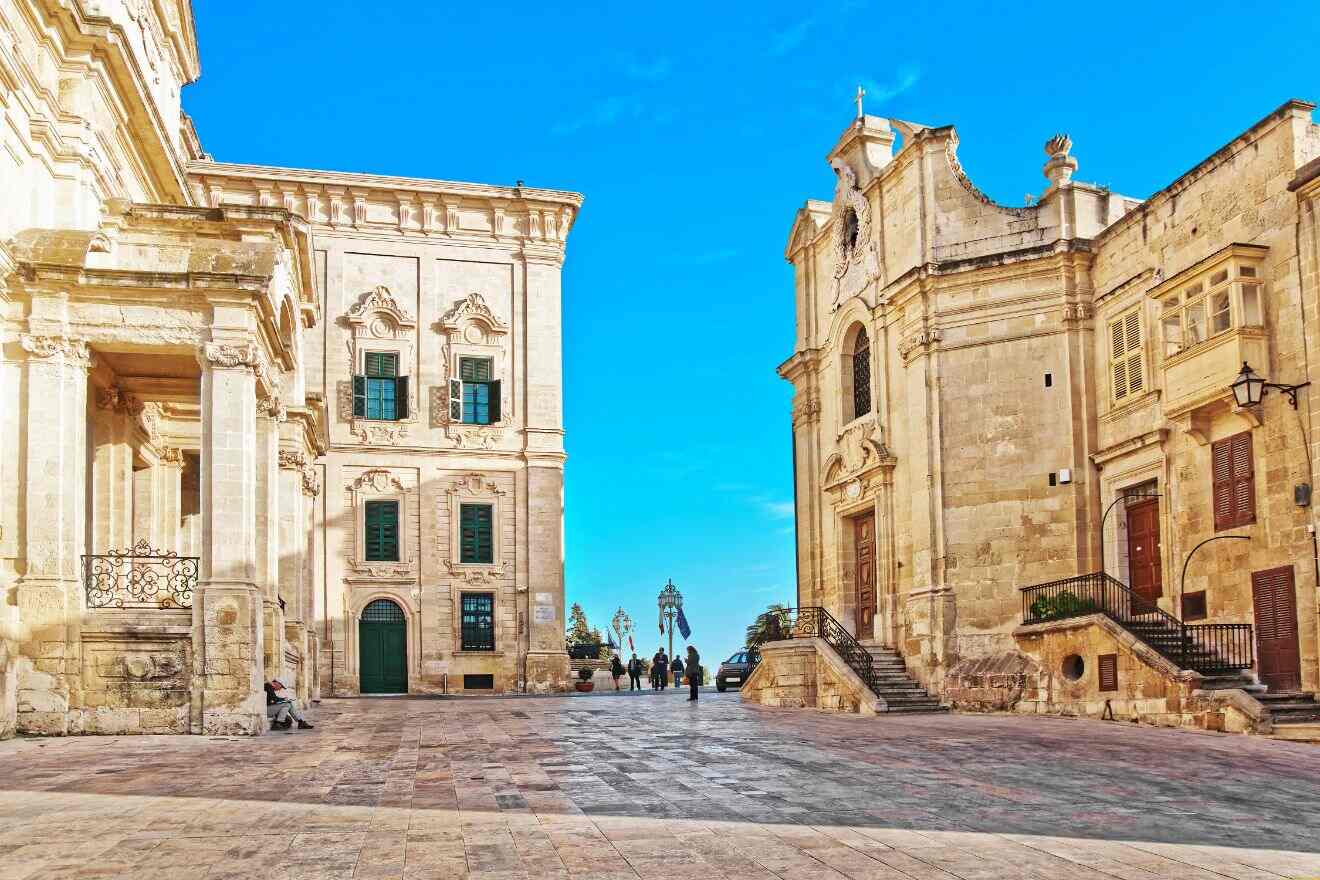
Valletta’s foundational cornerstone was placed on the spot where a small but beautiful church from the 16th century still stands proudly. This church was the initial structure constructed in Valletta and, despite being damaged during World War II, is in great condition, having undergone recent restoration efforts.
Although it may be compact, there’s some absolutely stunning artwork to appreciate, especially the ceiling paintings, which beautifully portray moments from the life of the Virgin Mary.
TIP: if you haven’t chosen a tour already, I highly recommend joining the original Malta walking tour, which includes a visit to the Our Lady of Victories Church, and most of the other important landmarks I mentioned on this list.
TOUR PRICE: from €18 per person
13. Observe local artists at St. James Cavalier
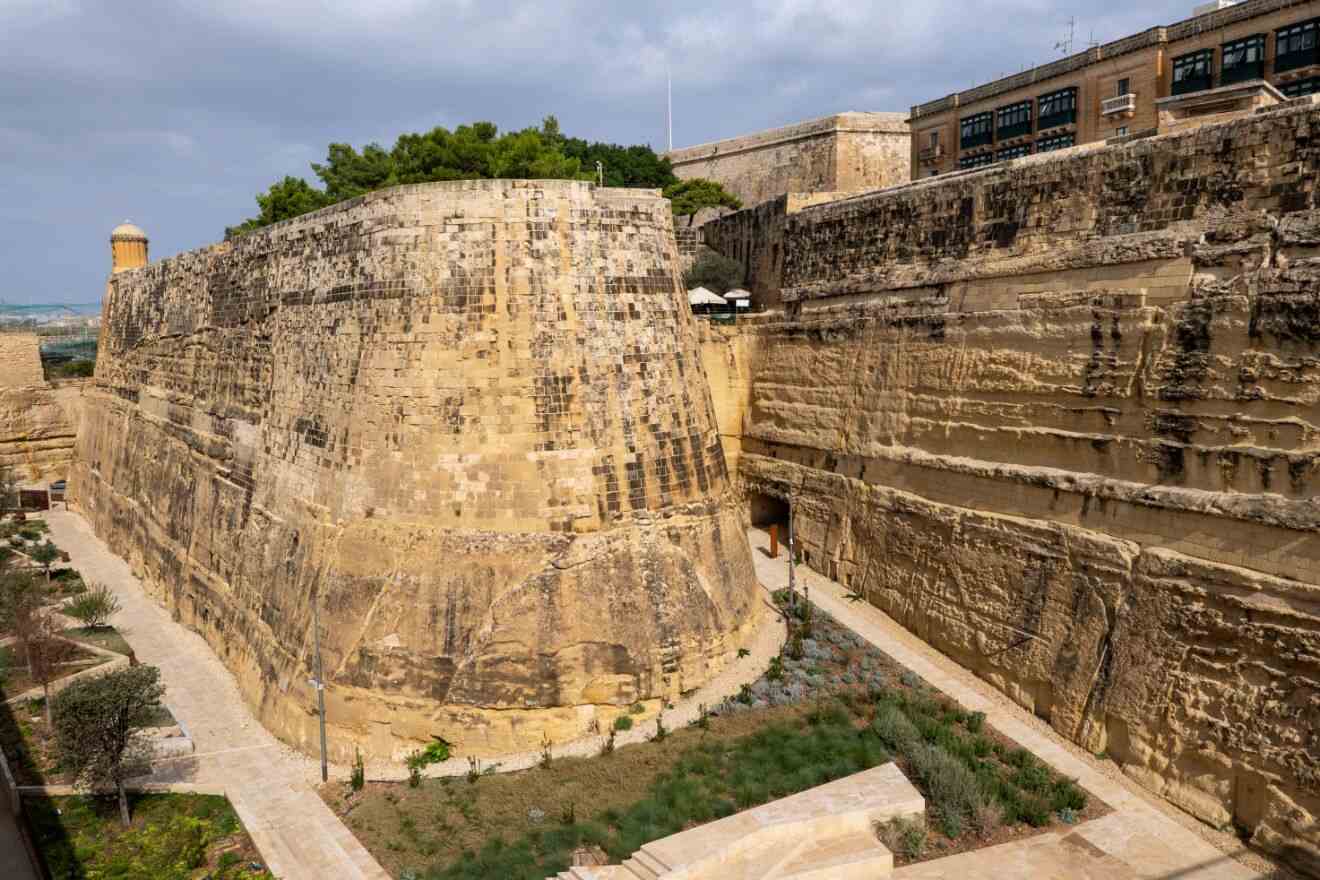
Just behind the Church of Our Lady of Victories lies one of the oldest fortification buildings in the city, St. James Cavalier. The building was one of the original fortification buildings planned by the Knights, and its carbon copy, St. John’s Cavalier, sits roughly in the same position relative to the City Gate, the main entrance to Valletta.
Originally designed as a platform to protect Valletta against attacks from the land, the structure now serves as the Centre for Creativity. After extensive restoration work in the late 1990s, St. James Cavalier provides a platform for local artists, offering exhibition spaces and facilities for various events and performances.
Aside from attending the usual exhibitions and events (see calendar here), I highly recommend taking a casual stroll inside the building. It’s definitely worth exploring!
14. Go back in time at the (once) top-secret Lascaris War Rooms
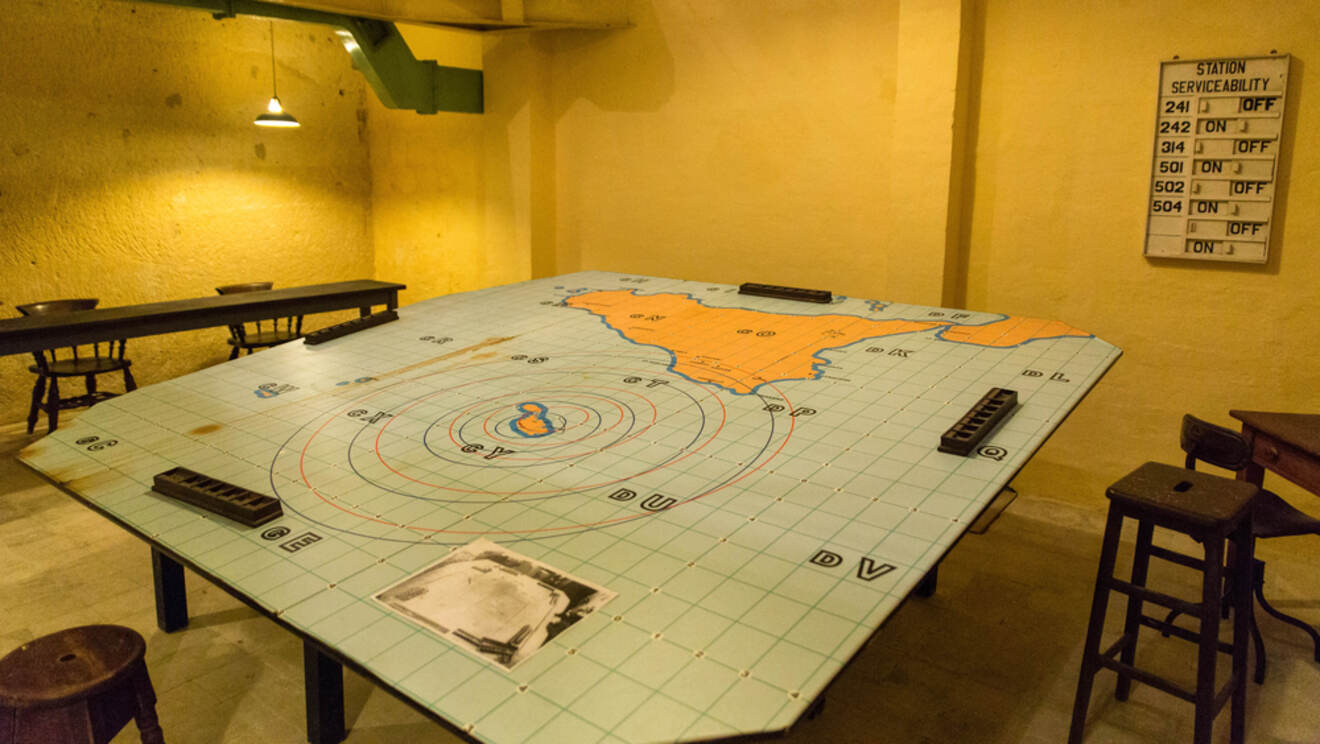
The Lascaris War Rooms consist of an underground complex of tunnels that served as the core of the British war defense headquarters during World War II. Considered one of the most well-preserved secrets of the war, these underground tunnels were instrumental in coordinating Malta’s defenses, leading to a triumphant victory against the Axis forces.
Touring the complex makes you feel like you’re transported back to the WWII era. Even though the waxwork figures may seem simple, the carefully and authentically restored interiors make it easy to imagine what those dark days must have been like.
You can find the museum underneath the Upper Barrakka Gardens. When facing away from the gardens’ entrance, simply turn right onto Triq Sant’ Orsola, retake the first right, and keep going down the street and steps. Following the signs, you’ll eventually find the Lascaris War Rooms.
You can buy tickets and book tours online, on this page.
PRICE: €14 per person
15. Take in panoramic views at St. Elmo Breakwater Bridge
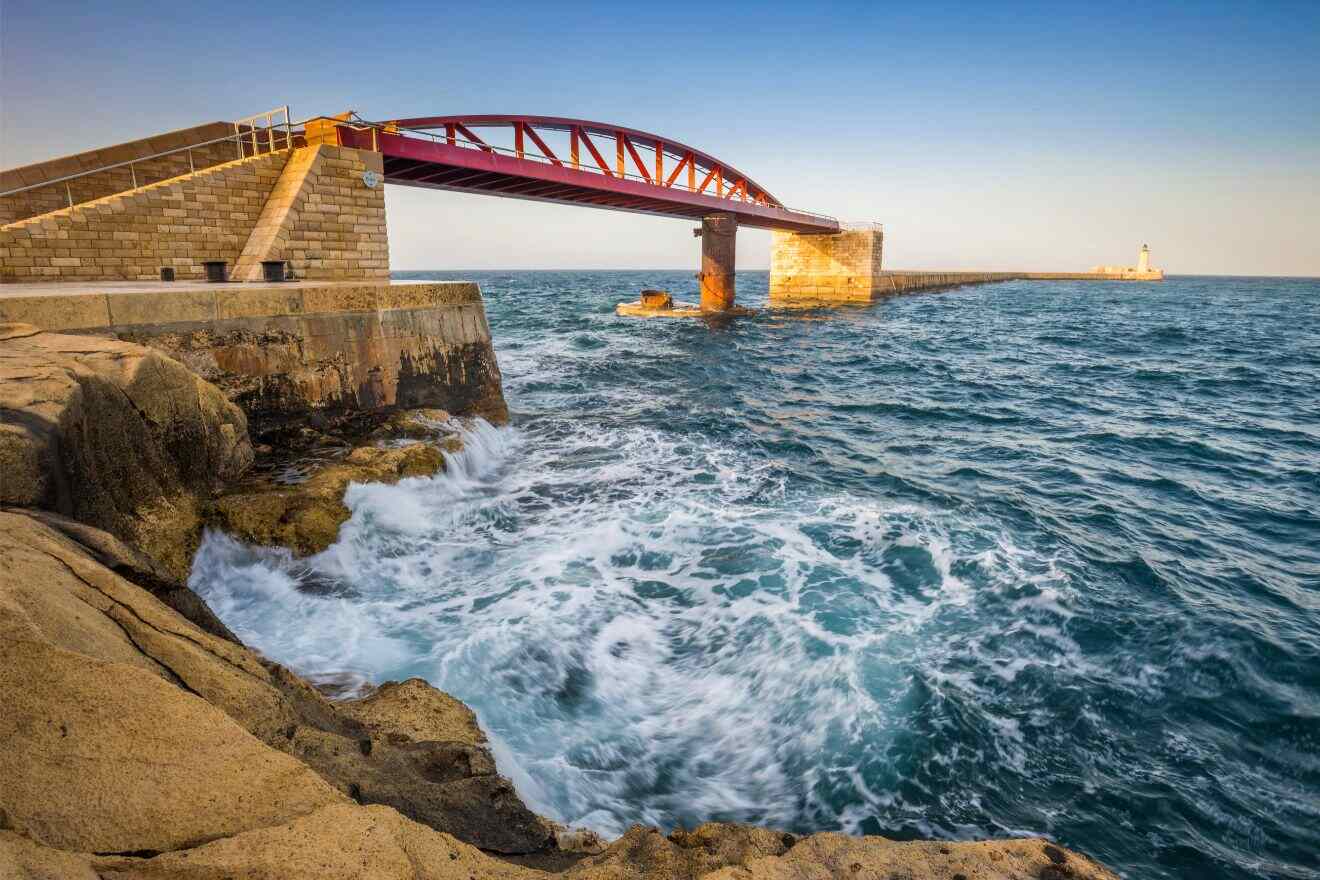
If you’re not too keen to get “off the beaten path” or have limited mobility, this one may not be for you. However, if you’re open to a short hike along the rocky coastline near Fort St. Elmo, you’ll eventually reach the Breakwater Bridge and enjoy the breathtaking panoramic vistas of Grand Harbour.
PRO TIP: Before heading down there, however, it’s worth checking if the bridge is actually open, as it may sometimes be closed to the public. People manning the ticket office of Fort St. Elmo or the Malta Experience (Sacra Infermeria) should be able to provide this information.
If the bridge itself is closed, it’s still worth following the rock-hewn steps to the side of the fort and making your way to the bridge’s entrance. In a city full of buildings and people, it can be a nice respite from the hustle and bustle just the same.
16. Head Underground

The city of Valletta was built on top of an intricately designed system of underground tunnels, designed to store food in large silos, for modern water supply, to move troops underground, and more. During World War II, some of these tunnels were also used as air raid shelters.
Access to parts of the underground network of tunnels was restored in recent years, and you can visit Valletta Underground on a guided tour with a flashlight in hand.
Apart from being a great way to cool down in summer, this is an often-overlooked side of the city that’s really interesting to explore if you’re into history. You can buy tickets here.
NOTE: people wearing heels, sandals, and flip flops as well as children under age of 6 are not allowed to enter the Underground for safety reasons.
PRICE: €10 per person
| 🌅 Top attraction with a view: | Upper Barrakka Gardens |
| 🕌 Unique attraction: | Valletta Underground |
| 🎫 Must-take tour: | The Original Valletta walking tour |
| 😋 Must-try food: | Pastizzi |
Where to stay in Valletta, Malta
Since you’re looking for the best things to do in Valletta, I thought that you could also make some use of some hotel recommendations.
I picked the top-rated accommodation in Valletta, and ordered the options from most to least expensive, with prices ranging from € to € for 2 people per night.
For more options, you should also take a look at our in-depth guide on the best areas and hotels to stay in Valletta.
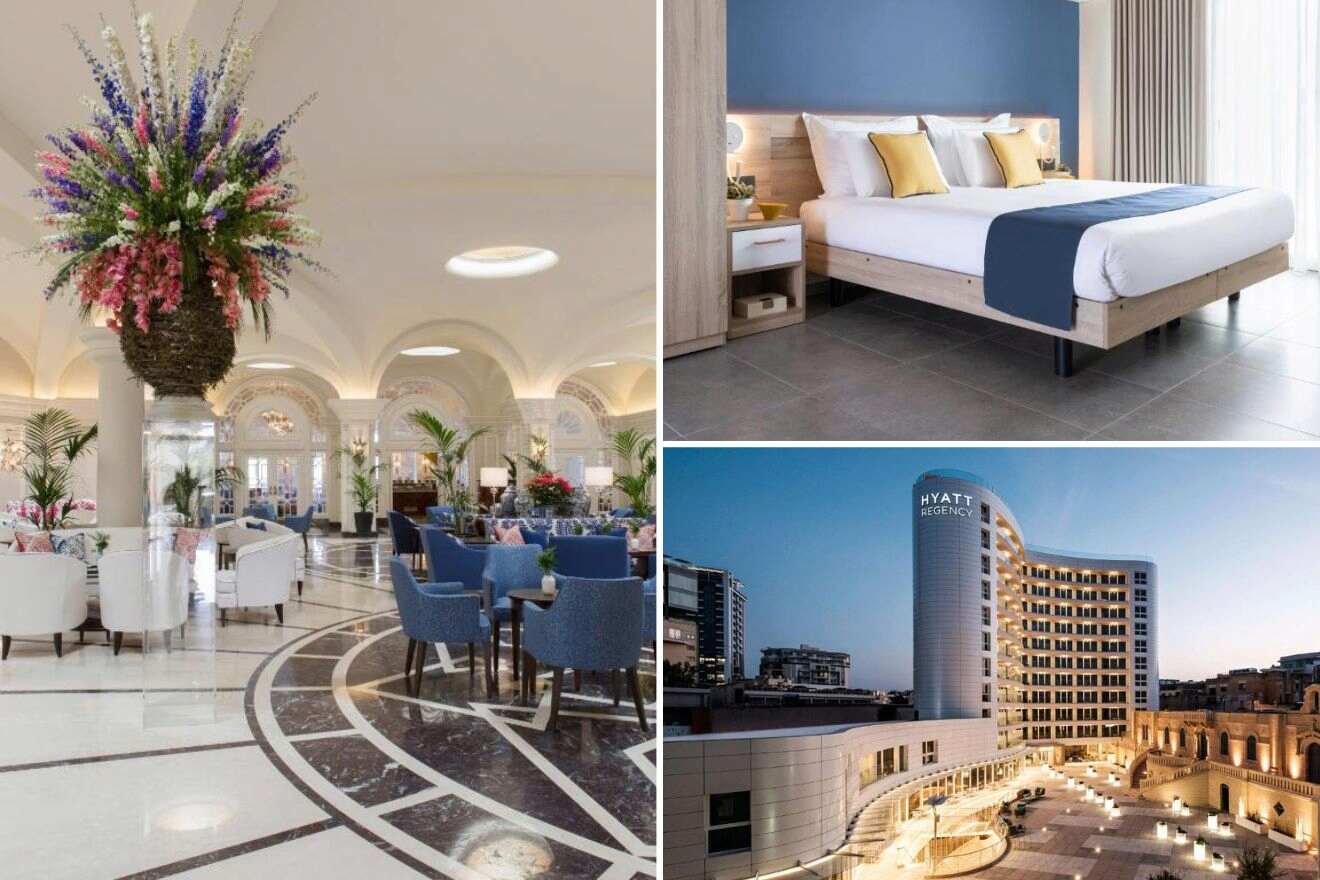
Luxury (from €350 and over):
- The Phoenicia Malta – ever wanted to feel like royalty? Now you can by staying at this hotel. Exceptional decor, royal treatment, and enchanting gardens are just a few of the perks that will entice you to book your stay here.
- Westin Dragonara Resort – located in St. Julian’s, this modern hotel will pamper you throughout your stay. Some of the amenities are indoor and outdoor pools, 3 restaurants on-site, and rooms with views of the Mediterranean Sea.
Mid-range (from €160 to €300):
- The Cumberland Hotel – apart from clean and modern decor, and spacious rooms, guests loved the convenient location, just 5 min walk from the Upper Barrakka Garden, and the yummy breakfast.
- Hyatt Regency Malta – you’ll love your stay in this hotel in the center of St. Julian’s. Think spacious elegant rooms, indoor and outdoor pools, and relaxing spa services. I’m sold!
Budget (up to €150):
- Grand Harbour Hotel – a great value for money, this budget hotel is located in the center of Valletta and offers comfortable rooms, with private bathrooms, and a sun terrace overlooking the harbor.
- Antoniel Suites – an incredible budget hotel in the center of Valletta, with an outdoor swimming pool, family rooms, and a balcony.
Practical information
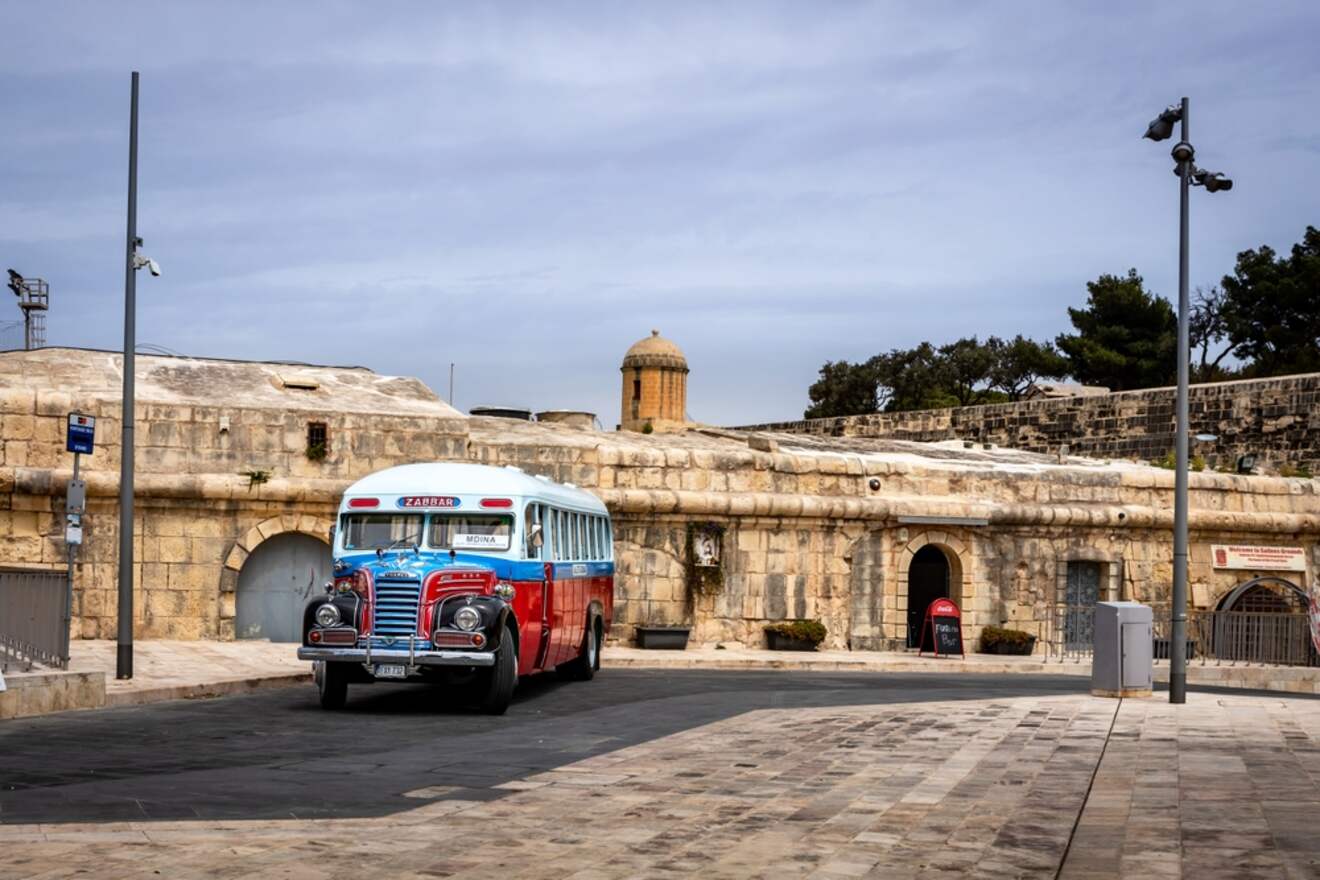
As a Valletta local, I thought that these tips may come in handy when planning your trip to Valletta, Malta.
Getting there
The saying “All roads lead to Rome” is very much applicable in the case of Valletta and the road network in Malta. The same goes for local public transport, where most bus routes start and terminate at the bus terminal that’s located on the city’s doorstep.
Getting around
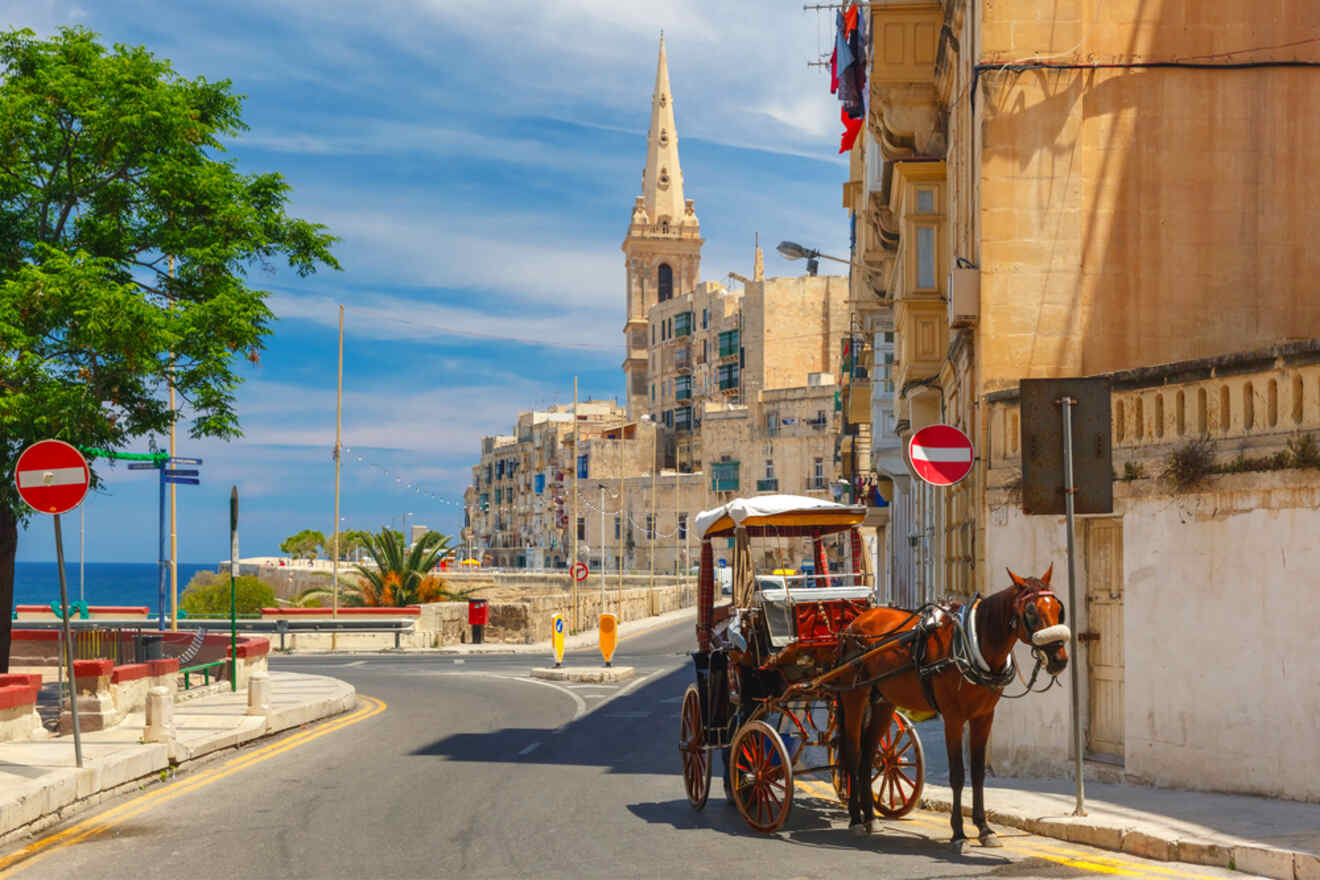
Everything is easy to reach on foot, as Valletta is one of the smallest capital cities in Europe.
Tired of walking? You can easily rent a shared electric bike from the stand near the Public Transport ticket office just outside the City Gate or rent a shared scooter through the Bolt (local cab/scooter sharing) app.
Interested in local culture and village life? Take a quick 7-minute (yes, I timed it) ferry ride to The Three Cities to wander around these charming harborside villages.
Other tips
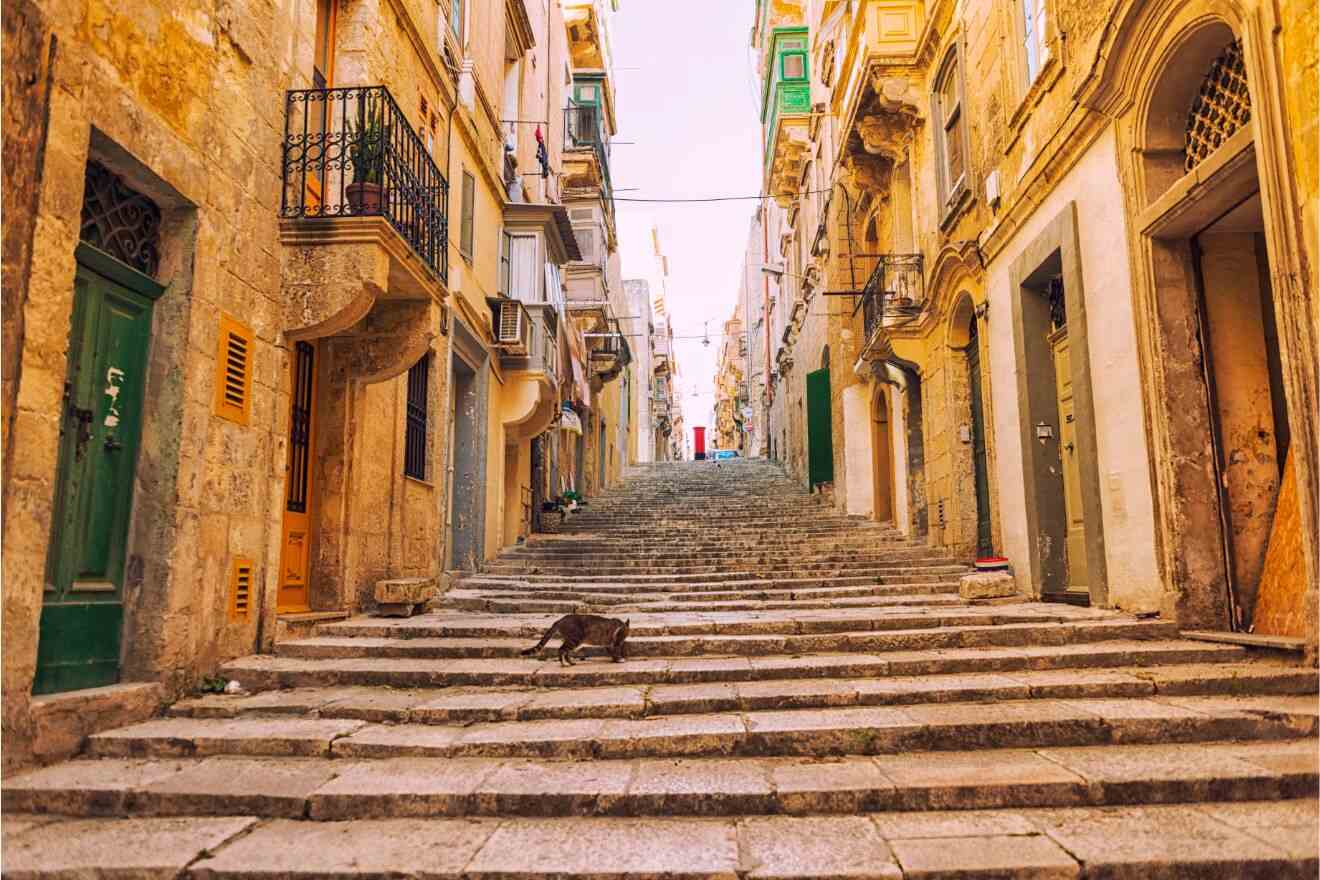
Sample local flavors at Nenu the Artisan Baker (143 St. Dominic Street or map), one of the few restaurants in the capital that serves traditional Maltese food.
If you plan on visiting Valletta in the evening, head to Strait Street to dine at one of the varied restaurants or enjoy a few drinks and a night out at one of the many bars in this area.
Heading to Valletta in the summer? Head to Bridge Bar (258 Triq Sant’Orsola or map) on a Friday night to enjoy live jazz music with a nice bottle of wine.
FAQs about things to do in Valletta
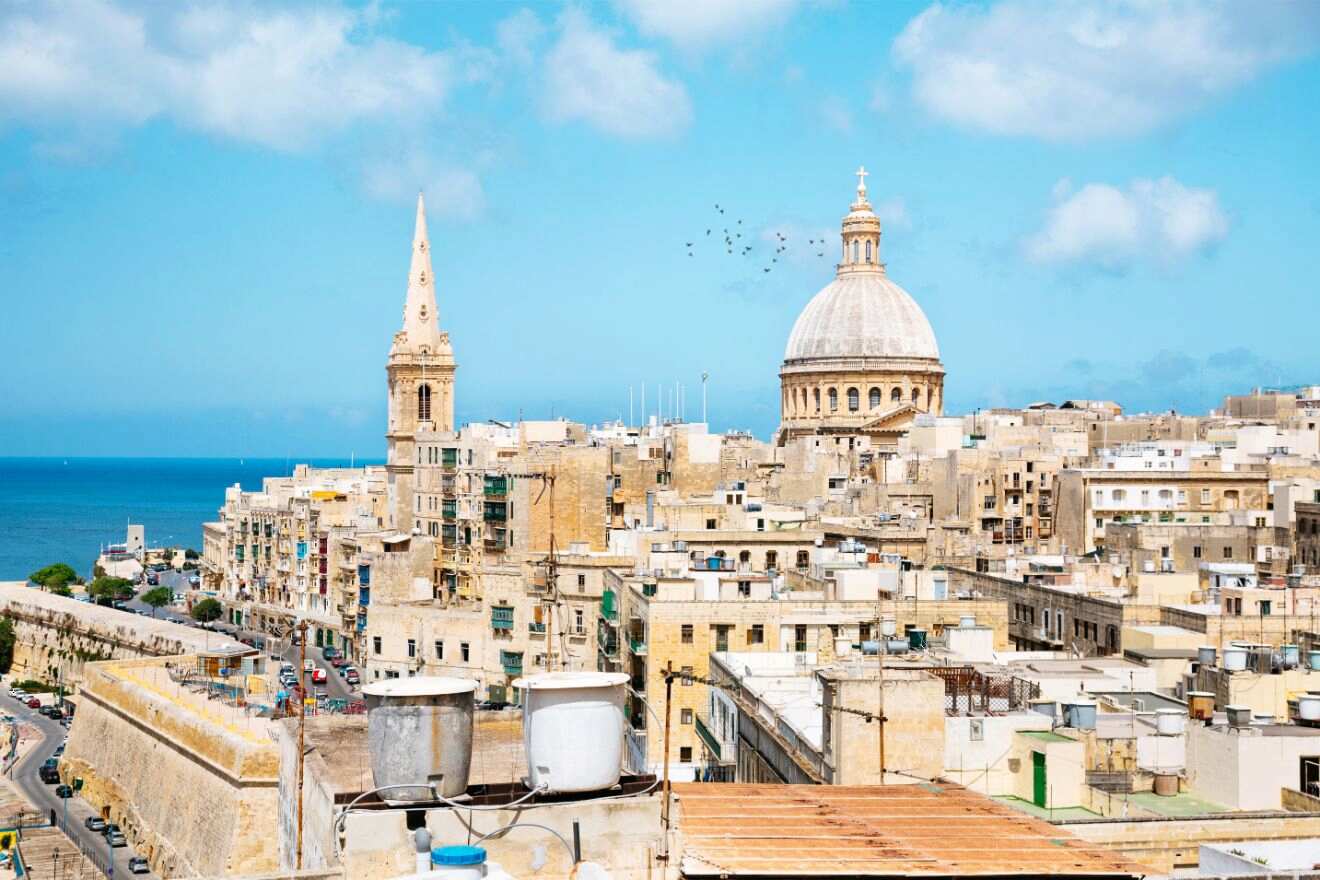
📆 How many days are enough in Valletta?
If you want to see the basics in Valletta, 1 day is enough. However, there’s enough to see and do for 3 – 5 days.
🚶🏿♀️ Is Valletta a walkable city?
Yes, most of Valletta is easy to get around on foot, with its city center being pedestrianized.
🎉 Is Valletta a party city?
Although there is nightlife to enjoy in Valletta in the form of bars, Valletta is not a party city.
🏙️ What is the main street in Valletta?
The main street in Valletta is Republic Street or Triq ir-Repubblika, which runs right down the center of the city, from the main gate down to the seafront.
Conclusion
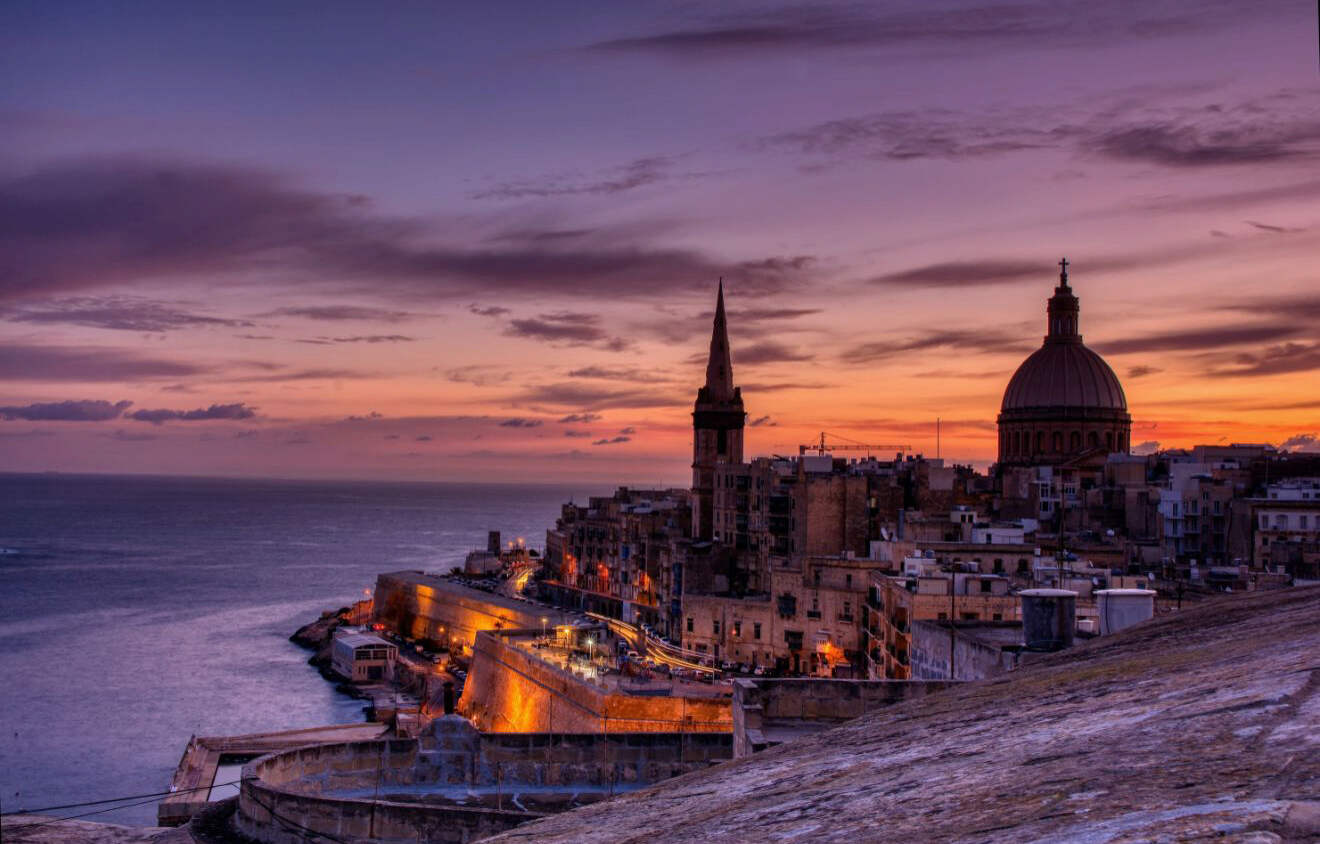
If you weren’t already intrigued by the prospect of visiting Valletta, with its many museums, places of interest, and food-sampling opportunities, I hope this guide with the top things to do in Valletta got you excited to go and inspired to explore.
Have a great trip!
Edward
Pin it for later!
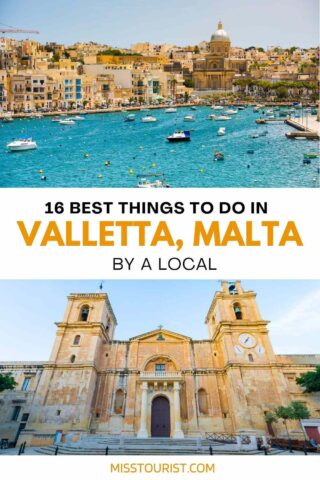
Pin it for later!
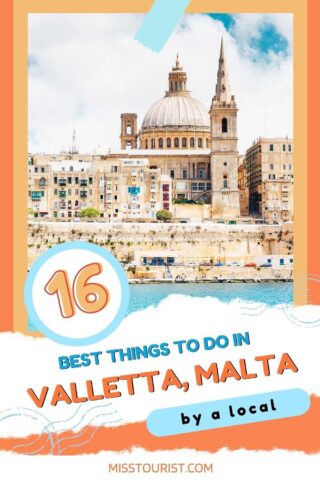

 Edward Lansink
Edward Lansink 







This site is protected by reCAPTCHA and the Google Privacy Policy and Terms of Service apply.